
the catalogue #346
| home | catalogue | history | references | appendix |
 |
surfresearch.com.au
the catalogue #346 |
| 1967 Keyo Vee Bottom 8 ft 4'' Stringerless, The Virgin, Shaped by Neil Purchase |
#346
|

|
Length
:
|
8
|
ft | 4 | inches | L2: | |
|
Width
:
|
24
|
inches |
Wide
Point :
|
-ve
3
|
inches | |
|
Nose
:
|
18
|
inches |
Tail
:
|
19
|
inches | |
|
Thickness
:
|
3
1/4
|
inches |
Pod
:
|
12
|
inches | |
|
Nose
Lift :
|
inches |
Tail
Lift :
|
inches | |||
|
Weight
:
|
kilos |
Volume
:
|
litres | |||
|
Chamfered
Pod
:
|
17
|
inches |
| FIN
11 1/2 inch x 9 inch base x 12 inch span @ 9 1/2 inches Laminated Fibreglass Greenough |
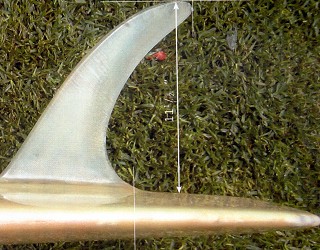 |
| DECOR
DECALS Deck: Small Keyo heart in maroon - probably cut from a larger decal. Bottom: MARKINGS Deck: Virgin - pencil on pod, incorporating the decal. Bottom: COLOUR Deck: Clear Bottom: Originally black resin gel. |
 |
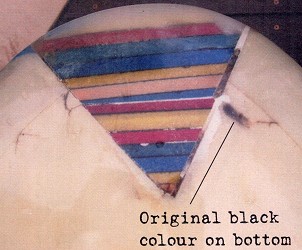 |
Nose repair and remnant of original black decor on the bottom. Right :Tail. Below:
|
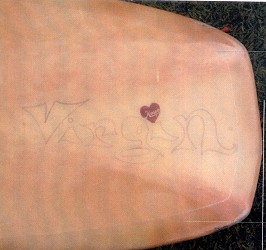 |

| All
board dimensions
and images courtesy of David Bell, with many thanks.
David
prepared a
booklet with the images reproduced in this entry,
detailing the board dimensions
and copies of various of book and magazine articles
revelant to the history
of thie vee bottom design.
In
2000 Manly surfing
enthusiast, David Bell, purchased what was obviously a
late 1960s vee bottom
surfboard, although at the time it was completely
covered in blue house
paint.
Hynd reported: |
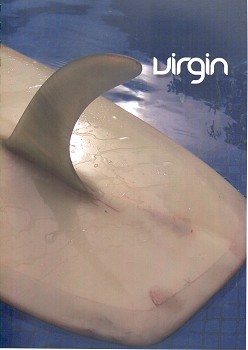 |
- Hynd, Derek:
Surfers
in History - David Treloar
Tracks
magazine,
December 1988, page 28.
Treloar's recollections were not completely accurate - the board held by David Bell is in fact 8 ft 4'' long, a much more reasonable size for the period.
Extended
accreditation:
Illustrating
the
complex and ad hoc nature of research, in June 2010 I was
contacted by
Andrew Kidman in regard to a board design by Rod Ball and
during our phone
conversation I mentioned my current project was revising the
history of
transition boards during 1967.
Andrew noted
that
he had some material that I may find interesting and posted a
booklet compiled
by David Bell that contained his photographs and dimensions of
the Virgin
and copies of several relevant magazine and book articles,
including the
Tracks'
article quoted above.
Therefore,
thanks
to David Bell, Mick Mock, Andrew Kidman, Derek Hynd and David
Treloar.
COMMENTS
Neal Purchase's
naming of the board probably indictes it was the first
surfboard he shaped,
at least at the Keyo factory.
DESIGN
HISTORY
For an extended
history of the development of vee bottom boards see:
history:
a period of transition 1967-1968
Between
February
and November 1967 intensive competition between Sydney
manufacturers and
their stable of surfer/shapers (primarily Midget Farrelly
(Surfboards),
Palm Beach and Bob McTavish at Keyo Surfboards, Brookvale) saw
length reduce
from 9 ft to 7ft. inches
Reduction in
length
was a major step forwards in performance with a tighter
turning arc.
This saw a
concentration
on the tail area to improve turning....
- the widepoint
was moved back, and in some cases emphasised.
- deep vee
panels
in the bottom
- wide planning
tail, in many cases with a chamfered tail to adjust water
flow.
- Greenough
style
flex fins were standard and fin placement was advanced towards
the back
foot
The nose was
now
only two steps away (not four), and nose riding was not
overlooked...
- the nose
retained
a wide round profile, and sometimes featured a concave
Volume lost by
length
reduction was offset by increasing width and the deep vee tail
and many
top surfers continued to kneel paddle, although average
surfers could only
paddle these boards prone.
- the use of
deck
patches is common
- many boards
continued
with a stringerless blank.
Rocker was
slightly
increased, with a bit more nose lift.
Rails retained
the
standard 50/50 egg thin rail.
Standard
Greenough
style fins got finer and longer, in experimentation with
extreme flex.
Some fins snapped above the base, many show warp or twist.
Colour was
mostly
clear, with decor restricted to decals, volan overlaps and
patches.
Resin pinlines
or
pannels were rare, Pigment/tint rarer.
Usually only
one
decal, placed on the deck, at either sweet spot.
Decals were
larger,
more colourful and psychedelic/art deco in design, for example
George Rice
circle.
| REFERENCES:
Other Vee Bottoms : #26 1967 Gordon and Smith, Vee Bottom 7 ft 7" #168 1967 George Rice, Vee bottom 9ft #3 1968 WM, V-bottom 8 ft 3" Other Keyo Surfboards CONDITION: 7 Neil Purchase riding The Virgin,
1967.
|
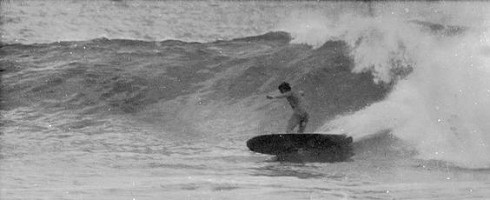 |
 |
Deck |
 |
Bottom |
 |
Rocker |



| home | catalogue | history | references | appendix |